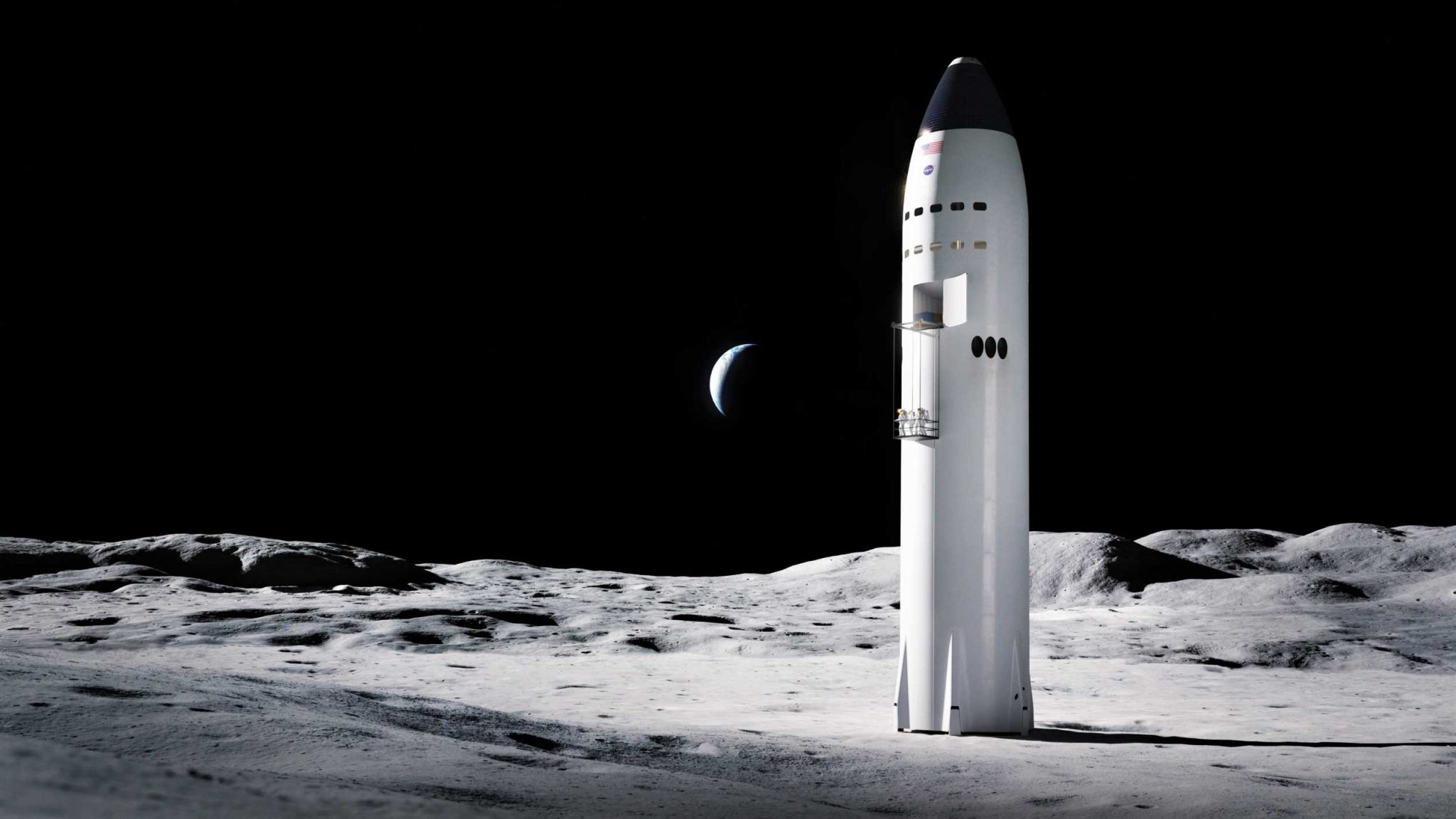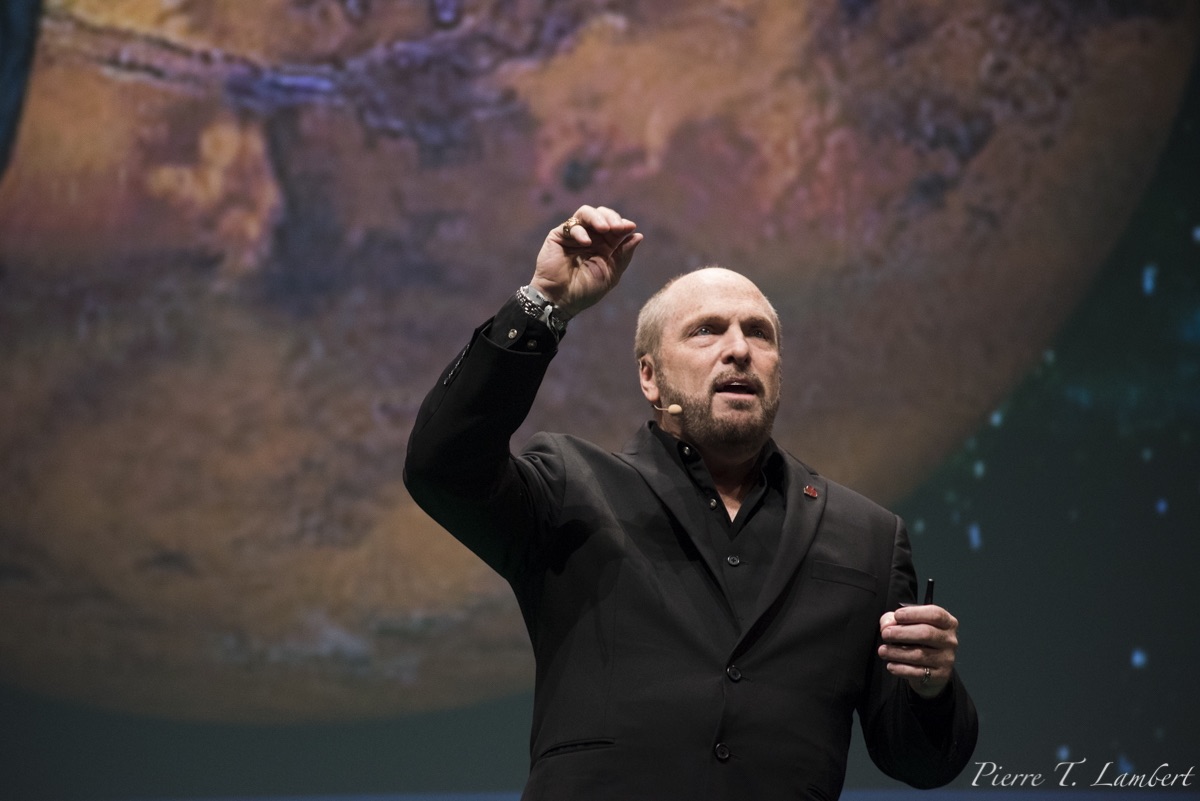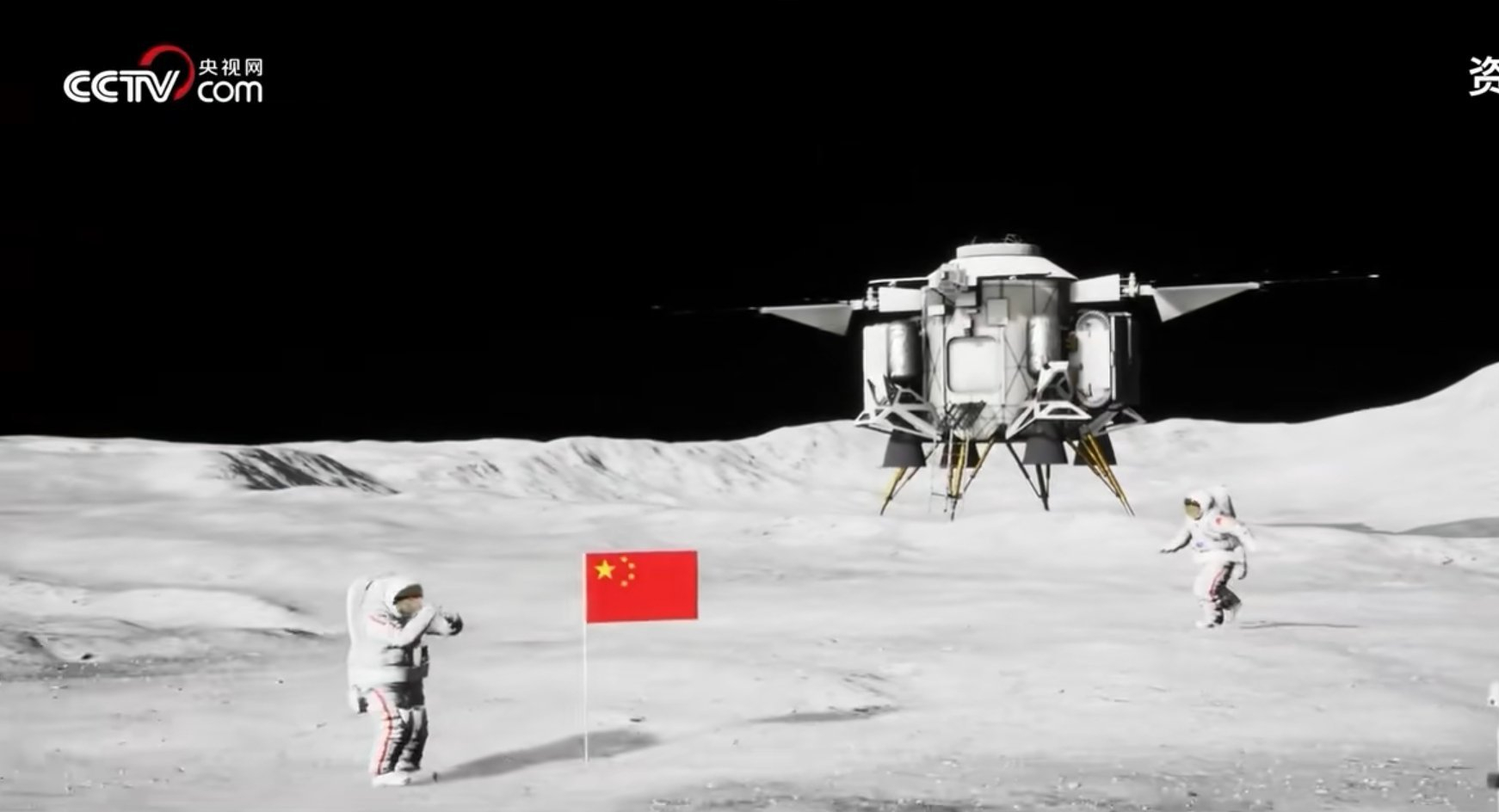Return to the moon: The race we have to win (again)
Those who control the moon gain a lot of options when it comes to the future.

America is going back to the moon. Eventually. This time to stay. Sort of. At least, that's NASA's plan — for now.
Through a program called Artemis, the agency will, at some point in the 2030s, allow a couple of its employees, including the first African American and first woman, to step on the rock where Buzz, Neil and 10 other Americans stood some 50 years ago. Then, after a few more such missions, the U.S. government will establish a part-time sometimes camp that may become somewhat permanently staffed by 2040 or so — unless there are more delays or budget cuts.
It doesn't sound very inspiring, does it? It isn't. Nor is it useful or really important as currently structured. NASA says its main goal is to learn how to send humans to Mars. Great. That is exciting and important. However, given that Elon Musk's SpaceX may get there (Mars) by 2040 to establish the first human community beyond Earth, the Artemis moon plan seems … irrelevant. It is.
Related: How China will land astronauts on the moon by 2030
However, China is focused primarily on the moon and is moving full-speed ahead on its lunar base. They plan to put their citizens on the moon before 2030 and stay there — permanently. China will then use its base to begin mining lunar resources as part of an industrial development program. From that first landing, their current plan is to expand and accelerate dramatically in the 2030s, leading to full-scale lunar factories by the 2040s producing materials to build massive solar power stations and other space facilities.
For those who might be skeptical of my words or of Chinese promises, or are still bought into the NASA Artemis hype, let's compare:
Space station(s)
In 1984, NASA said we would have a space station — an outpost named Freedom, approved by President Reagan — by 1992 for $8 billion. The International Space Station (ISS) actually began its life in 1998. It was never completed, and primary construction stopped around 2011 after we and our partners spent roughly $150 billion. Originally sold as a spaceport and research facility to support our exploration and expansion into the solar system, those elements of it were dropped to save money. While it has been a great source of information and research, ISS will have nothing to do with returning humans to the moon. Rather, NASA has announced it will be thrown away, and wants to build a new space station called Gateway to fulfill a way station function (only for the moon).
Breaking space news, the latest updates on rocket launches, skywatching events and more!
China said it would build a space station by 2011. It did. Their early versions led to today's Tiangong space station. About a fifth as large as ISS, it is up there right now with a crew that varies between three and six on board. We don't know its cost. But I've been to Walmart and Harbor Freight. I bet it was cheaper than NASA's.
Transportation
Back in the 1970s, NASA told Congress the space shuttle would fly 50 times a year and carry payloads to space for $100 a pound. At its peak, the shuttle flew only five times in one year and helped lock the cost of flying to orbit at over $10,000 a pound.
NASA (Congress) has declared that the nation needs the Space Launch System (or what I call the Space Launch Scam) rocket to open the solar system. It cost taxpayers over $23 billion in its first 10 years, was years late, will cost over $4 billion per flight, and can only fly once every few years. It will be thrown away after each flight.
Along with the SLS is its Orion space capsule, which NASA says it needs to bring astronauts back to Earth. So far, Orion has cost about $20 billion. According to the Planetary Society, if we include the famous crawler and ground infrastructure needed to support SLS and Orion, the total is over $49.9 billion.
After reaching a flight rate of one per week with its Falcon 9 rocket and perfecting partial reusability, SpaceX has flown 10 human missions to orbit, including as a NASA astronaut taxi to ISS and private missions. Boeing, NASA's long-time prime contractor, has yet to fly its Starliner astronaut capsule, despite being paid around $4.5 billion to develop it and twice as much per astronaut as it is paying SpaceX — even though SpaceX is not flying smaller astronauts.
Related: 8 ways that SpaceX has transformed spaceflight
Meanwhile, SpaceX is testing its huge new Starship vehicle. If it achieves its goal, Starship will cost 40 (yes, forty) times less than the SLS to deliver payloads to the moon, will be partially self-funded, and, when fully operational, will be able to refuel in space and fly to and from the moon multiple times a month. Even if SpaceX's claims are off by a factor of 10, Starship will still be four times cheaper than SLS, fly hundreds of times more often over the decade, and it will also be able to go to Mars.
It is worth mentioning that at least five U.S. firms, including Jeff Bezos' Blue Origin and Rocket Lab, are focused on reusable spaceships that also promise to lower the cost of access to space dramatically. And Blue is also working on a lunar transportation system — partially funded by NASA.
So who do you believe? What do you believe? And what is the best and most important purpose of returning to the moon?
The Chinese have it right when it comes to the "Why?" After all, it's pretty clear they got their ideas from us. I don't mean "us," as in just NASA. I mean U.S. citizens, including science writers, former NASA folks, or visionaries like my mentor Dr. Gerry O'Neill, who, in his 1976 classic "The High Frontier" laid out a plan for going to the moon and asteroids to build space-based energy systems that could end humanity's dependence on carbon. To be fair to the brilliant people who have come and gone at the agency since then, there are also lots of studies and plans and concepts rotting on NASA shelves that lay out ways to do incredible things on the moon — ignored by Congresses and White Houses, but not by China.
It's a story we are all too familiar with. American genius and creativity produce a brilliant idea or plan. We ignore it. Then China does it, and in the end, sells its product back to us. In this case, the product will be low-cost clean energy from space, "rare-earth" metals, and fusion-enabling Helium-3 mined on the moon. Oh, and they will also control the Earth-moon system the way they are trying to control the seas of the western Pacific. This is the reality of things as they stand.
Here's the science fiction part. Imagine if the White House and Congress could agree that it was time again for America to step up as we did during the first space race. What if we decided to return to the moon before China arrives in 2030? In fact, what if the president declared that Americans will be back on the moon by 2029, the 60th anniversary of Apollo 11? And this time we were going to stay!
Better yet, our return would be focused on developing new clean energy systems and resources to help save Earth from our current climate crisis! (Sure, Republicans would first have to admit there is a crisis, but their kids would get it.) Imagine a nation united behind a single cause. Imagine the excitement that would build as the date got closer. Imagine the moment. Not an also-ran after China's triumph, but two Americans, free people, confirming the first race wasn't just a fluke, and showing we do have the Right Stuff.
We still have time. We also know what to do to get it right. But it would mean some serious changes in who, why, and what we are doing regarding the little gray island off our orbital shore.
It's not too late for Congress and the White House to call for a "drop tools" moment (an engineering term for a pause) and re-evaluation of why we are going back to the moon and who is going back and for how long.
Here's a suggested plan. Let's call it the Artemis New Moon program. It is simple, based on practical need, strategic utility, and what Buzz and Neil's generation called "common sense." If implemented immediately and with vigor, it would also mean the free world can beat the Chinese — both in the short and long term, up there and down here.
Related: 'We're in a space race.' NASA chief says US 'better watch out' for China's moon goals
1. The president sets a goal for U.S. astronauts to land on the moon by 2029, the 60th anniversary of Apollo 11. As to their gender or race, that's a political decision. Maybe one Republican and one Democrat. Ok, perhaps that's too much. But we can also still call the first NASA-led missions Artemis. All good. We already have the patches. Save some money.
2. The Mars prep stuff will wait and shift. The first missions aim to explore, survey, and establish the first permanent human lunar facility (as in full-time all the time) and begin experiments on harvesting and processing lunar materials. In other words, the establishment of the first human community on another world. Let's call it Artemis Base (evolving to Artemis Town or A-Town). The astronauts and their robots will also build the first lunar landing pad. This is a priority, as lunar dust (what I call "razor blade talcum powder") is nasty stuff, and we don't want landing ships to be blowing it all over the place.
3. The means of transportation are a bit more complex, as the old-school SLS/Orion horse is already out of the barn. (Ok, it's back in the barn, but at some point, it may stick its head out of the barn again, and we've paid so much for it that we may as well use it.)
Regarding transportation, my suggestion here is not radically different than the current short-term plan in many ways, just faster. The challenge and question is whether we utilize the legacy Orions and SLS tech or toss them out right away as write-offs. For example, NASA can still use its existing contracted SLS rockets and Orion return capsules as part of a mixed fleet. Just no more BS about keeping them alive or extending their contracts. While they might hide their waste under the rubric of "exploration," they simply do not fit any serious economic development model for the moon or anywhere else. The old aerospace complex is welcome to compete in a future Earth-moon economy, but they'll need to go back to the drawing board and beat Starship, Blue Origin's New Glenn and the other NewSpace transport systems coming down the line.
So, in the near term, we can begin by using the SLS/Orions to win the sprint, with the Starships and other privately operated systems taking over for the marathon. This is a nice way for NASA and its contractors to go ahead and get their glory. Or, the SLS may be better suited to emplace large structures on the lunar surface. Meanwhile, Starships and Blue Origin moon pods carry the humans, with Orions used short-term to get them back to Earth. We will have to develop some sort of docking system and the ability to refuel in space. SpaceX is already working on the refueling part, and we did the docking and crew transfer part during the Apollo program. I believe we can do it again, and without an entirely new space station in the mix at first. We can let the experts sort this out. Note: I say experts, NOT lobbyists.
The key here is to get there fast AND to create a system that enables us to stay. Not visit, not camp out, but to stay and build. There needs to be a clear-headed trades discussion here by parties with no axes to grind nor contracts to be paid.
Whatever the mix, or if we decide to go straight to the next generation of reusable rockets, the plan must be completed by the end of this year. The New Moon plan must also incorporate a transition to a pay-for-delivery services multi-contractor model, enabling several players to get involved. Given what I've said about SLS and Orion, I want to be clear: I have nothing against the traditional aerospace contractors per se. They performed magnificently during the Apollo program. New Moon is their chance to reinvent themselves, too. However — and here's the only sci-fi component in this article — Congress and the White House have to agree to it, and fast.
4. If (and only if) it is found necessary to have a space station serving as a lunar gateway, NASA will contract for its services using a variation on standard leases as currently done for other government use all over America. The same will be true of ground facilities on the moon. Currently, the U.S. has five private companies that have raised over $200 million each to build their space stations. The interest and assumed capabilities are there. However, the first part of the race cannot wait for this decision to be made. We go!
Speaking of space stations, the model some of us worked on that NASA adopted to enable private companies to carry astronauts to the ISS might be applied. For example, a company can invest in designing a habitat, working with the agency on perfecting the tech, building the hab, and leasing it to NASA employees for a set price and time. If it houses more folks, the company can rent bunks to them, and at the end of the lease, the hab belongs to the company. This is how it's done every day here on Earth. The government has acted as an anchor tenant in hundreds of buildings nationwide. It works.
5. Also, Congress will offer the same sort of tax breaks and investment incentives it does all the time in areas of economic possibility and need to companies investing in the development of lunar resources and space-based energy systems. Again, NASA and the Department of Energy can work with companies to offset research and development costs, a normal tool the government uses to encourage technology on Earth — so why not in space?
6. NASA can then focus on exploration. After Phase One, the private sector takes over the building and expansion of what transitions from a base to an industrial park and community. Meanwhile, the agency's people can work on researching and developing those elements and projects that might apply more specifically to Mars. They would likely find a willing partner in Musk, who is always eager to offset his own costs for projects.
7. A-Town's biggest focus will be harvesting lunar resources, from water ice to regolith, to launch into space as bricks and mortar needed to build space solar power facilities. China is doing this. They are not doing it as a stunt. They are doing it because China, like the U.S. and the rest of the world, is facing an unprecedented climate crisis and knows it must transition away from a carbon economy — big-time and fast.
Related: 10 devastating signs of climate change satellites can see from space
The climate crisis aspect of this program is critical. Not only can whoever is on the moon utilize its resources to build space solar power plants, but it also offers other important tools to help us save the Earth. We know there are relatively large amounts of Helium-3 on the lunar surface, which is important in developing clean fusion energy. We believe there are massive amounts of what are called "rare-Earth metals" there as well. These are critical to the development of an electric economy. Lunar materials can also be used for more extreme emergency measures, such as building shades between Earth and the sun if things get out of control. The point is, those who control the moon gain a lot of options when it comes to the future.
One example of this dual-use exploration and development approach is that, while the civil and industrial program is building steam, the agency can launch its own Mars analog missions over the horizon on the moon's far side, supported by personnel living and working in a "mission control" center at A-Town. These support personnel's living needs can all be provided by contractors, priming the economic pump for civilian growth.
Not one item I have mentioned in this plan is new. I published a book in 2005 called "Return to the Moon," featuring 20 of the best lunar thinkers at the time. They, and I, and dozens of others much smarter than I, over many years since the end of Apollo, have worked out almost every detail of these ideas. As I said at the beginning, so has NASA. I have massive books on my shelves and piles of reports and studies by brilliant people at the agency showing how, if the decision were made, America could return to the moon quickly, efficiently, and in a way that assures the free nations of the world will lead humanity into the solar system.
So now, the challenge is to the White House and Congress. Feel free to send them the link to this piece and ask them: "Can you, just once in the short history of the 21st century, agree to take one giant leap that will position this nation to lead us for the next thousand years?"
The race is on. We are in a Sputnik moment — a sudden and important recognition that we are about to lose the heavens if we do not act with clarity and unity. Humanity is going back to the moon. The question is, Will America get there first, and will we stay when we do? Oh, and there's also that climate crisis thing — where we save humanity while doing so.
Rick Tumlinson is the founder of SpaceFund, a venture capital firm investing in space startups. He also founded the Space Frontier Foundation, Earthlight Foundation, the Space Cowboy Ball, and was a founding board member of the X Prize Foundation.

Both a rebel and a respected leader, Rick is listed as one of the top 100 influential people in the space field. Called one of the world’s top space “visionaries,” Rick helped coin the term "NewSpace" and worked to create the new commercial space industry highlighted by Elon Musk and Jeff Bezos.
A leading writer, speaker, and six-time Congressional witness, Rick helped start the first mission to find water on the Moon, signed the first ever commercial data purchase agreement with NASA, helped start NASA’s Lunar Exploration Analysis Group, led the commercial takeover of the Russian Mir space station, signed the first private astronaut to fly to the space station, co-founded the Space Frontier Foundation, and was a founding board member of the X-Prize.
As a result of his world-changing work, in 2015 he won the World Technology Award along with Craig Venter of the Human Genome project. He founded the SpaceFund venture capital company with 19 space companies in its portfolio and is a member of the US Space Force Doctrine Advisory Group.
Rick's The Space Revolution "radiopod" is featured on IHeart Radio Network's iRoc Space Radio and is available on most major podcast sites. He hosts the New Worlds Conference and the Space Cowboy Ball in Austin, Texas, and his non-profit EarthLight Foundation is creating an inclusive new movement to use space to protect the Earth and expand life into the cosmos.

